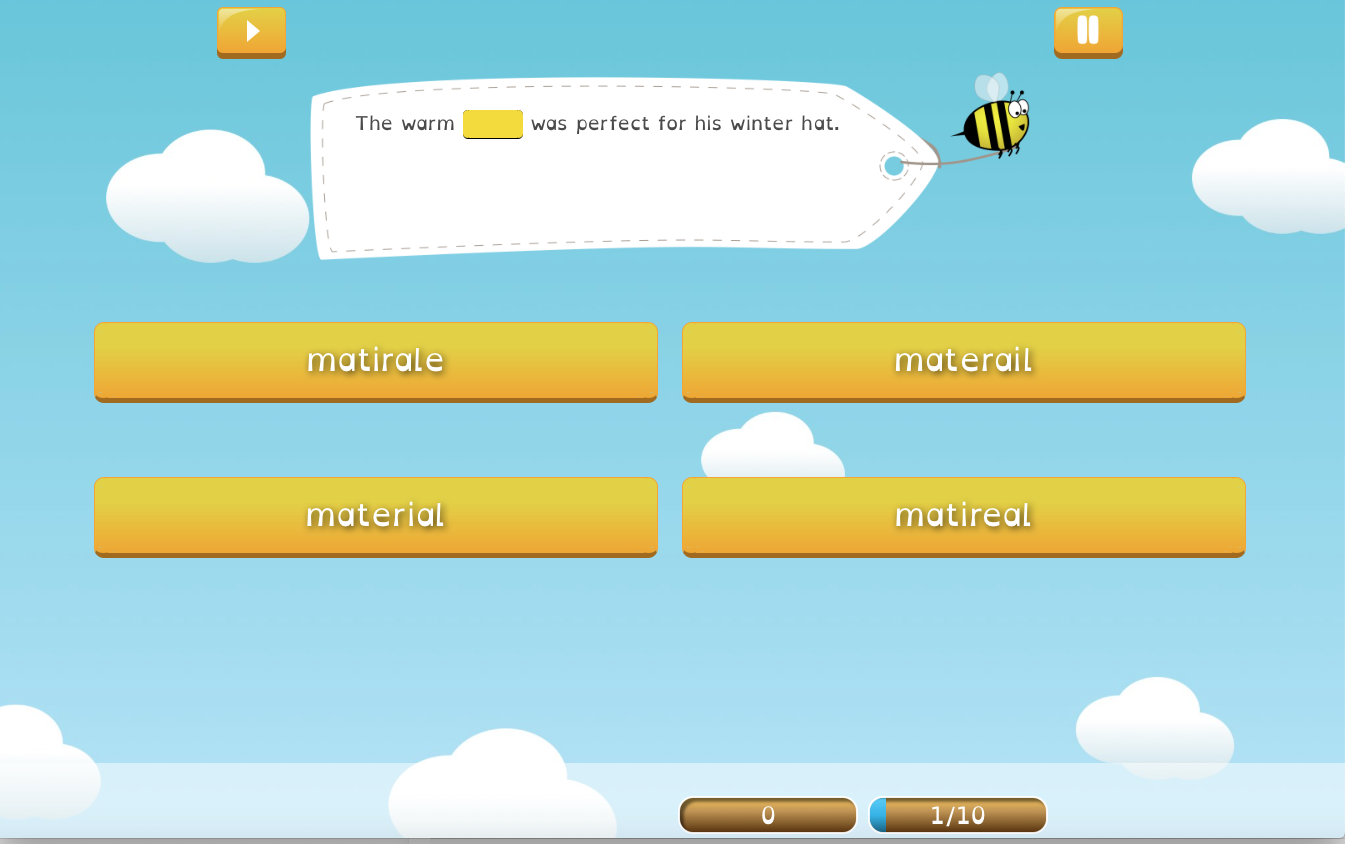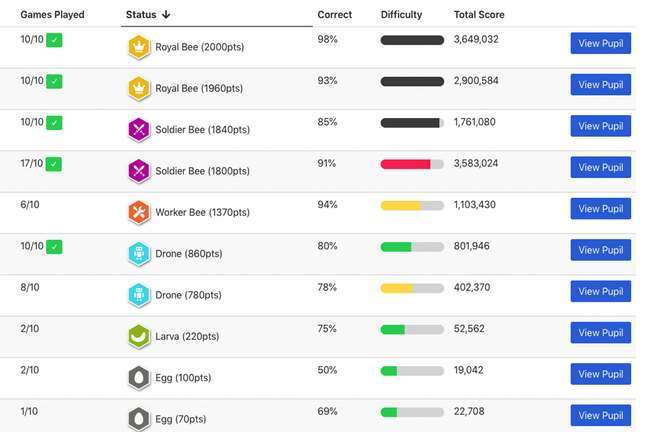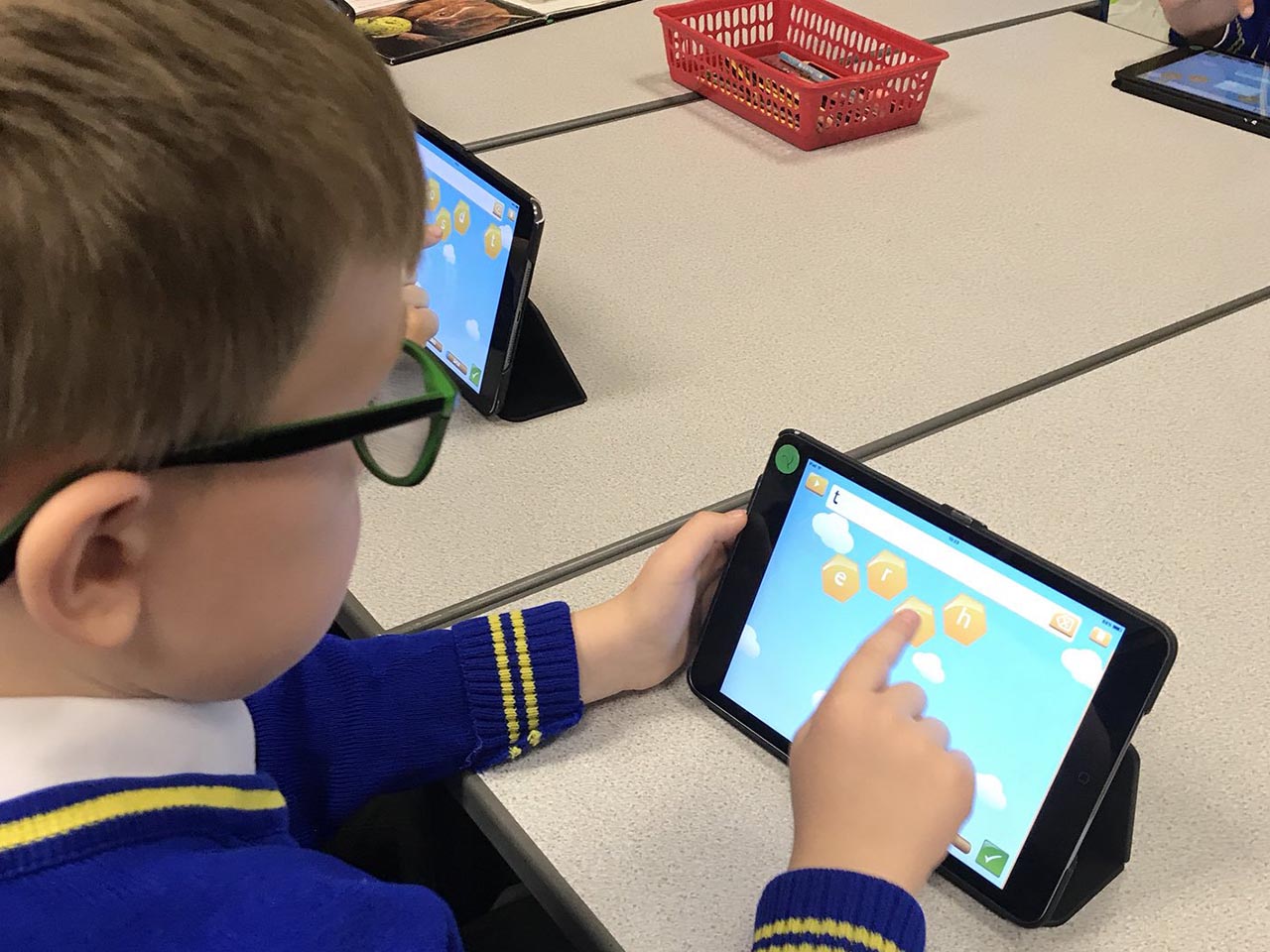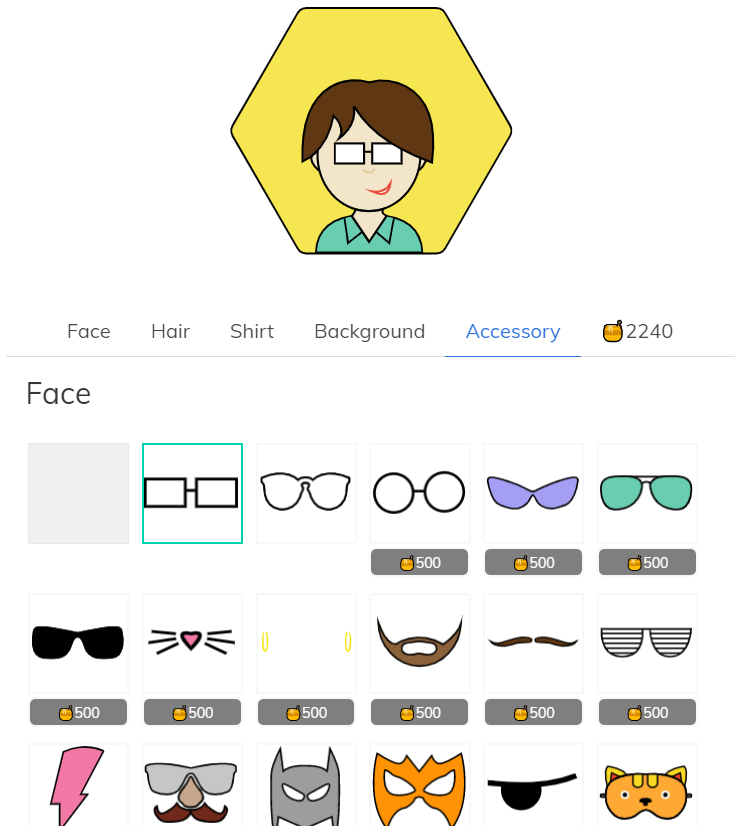TEACHERS
“I use Spelling Shed to teach sight word recognition and spelling. Spelling Shed is an independent assignment for my students. I am currently teaching remotely so I assign Spelling Shed via Google Classroom. I use the Hive Game to administer spelling tests every Friday. My students love it! I love that I receive data instantly.”
Nicole
Teacher, 3rd & 4th Grade.
Dunbar Elementary, Atlanta GA
Spelling Shed Curriculum Overview
Spelling Shed provides a series of word lists for grades K-5 that have been developed by applying the Science of Reading research and follow a systematic progression. The progression covers a range of phonics skills, high-frequency words, and morphological awareness, typically addressed in each grade level. Our curriculum aligns with current ELA standards for grade K-5.
Every grade has core foundational skills incorporated into the list progression, at varying degrees of difficulty, depending on the grade level.
- K-2 word lists are based mostly on phoneme-grapheme correspondences (PGCs), beginning with the most common patterns to more advanced ones. The majority of the words selected for each list contain only the PGCs that have been previously reviewed, to avoid cognitive overload, help ensure focus, and attain mastery of the skill at hand.
- In grades 3-5 as the shift from phonics to morphology becomes increasingly important, the word lists begin to focus more on providing opportunities to spell through meaning, with less emphasis on PGCs.
- Grades K-3 word lists integrate grade-level appropriate, decodable and partially decodable Dolch HFWs and Fry’s Instant 300 HFWs.
For districts that already have word lists or follow a word study curriculum, teachers can easily import those spelling word lists to use with Spelling Shed. We also feature ready made lists of popular reading series including HMH Journeys® and McGraw-Hill Reading Wonders®. We also provide traditional high-frequency word lists like Dolch and Fry.
Spelling Games
In order for words to move into long term memory students need an opportunity to play with their words. Spelling Shed has designed several engaging games that will help students do just that. Our main spelling game has four different levels to provide students with the right amount of support. Missing Word, another popular game asks students to identify the correct spelling of the specific word.
 Missing Word, another popular game asks students to identify the correct spelling of the specific word.
Missing Word, another popular game asks students to identify the correct spelling of the specific word.Game Levels
Each level includes audio
Easy Level
- Shown the word at first
- Given only the letters that are in the word
- Highest level of support
Medium Level
- They are NOT shown the word
- Given only the letters that are in the word
- Medium-High level of support
Hard Level
- They are NOT shown the word
- Given additional letters to complete the word
- Low level of support
Extreme Level
- They are NOT shown the word
- Given almost a full keyboard of letters
- No level of support
 Difficulty selection as seen in-game
Difficulty selection as seen in-gameGame Features
 Track assignment progress through the website
Track assignment progress through the websiteAssignment Feature
In order to keep students learning on track Spelling Shed created Assignments. This feature provides students with quick access to their weekly word lists. No more time wasted searching for word lists! Teachers have the option to create full years worth of assignments with a few clicks of the mouse or can create weekly assignments to target the needs of specific learning groups.
Teachers can track the group or class progress throughout the week with Assignment Rank. Students are provided with six different levels in regards to how well they are progressing with the weekly word lists. Levels in Spelling Shed are determined by accuracy as well as game difficulty.
Hive Games
Hive Games are engaging “live” spelling tests that display real time student data and are a favorite among students and teachers. Trends can quickly be identified for spelling misconceptions. Hive Games can be delivered as an in class tool, or as a remote learning option. Hive Games can also be utilized as a pre assessment to determine student levels.
 Students can play together with Hive Games
Students can play together with Hive Games Students can create personalized avatars using Honeypots earned in-game
Students can create personalized avatars using Honeypots earned in-gameAvatars, Honeypots, Scores, and Leagues
All users have an avatar which can be personalized. Avatar upgrades can be purchased using Honeypots. Honeypots are earned by spelling words correctly in all game types and in other EdShed games like MathShed.
All Spelling Shed games provide a score for correct answers, speed bonus, and streak bonuses. A shed score is the total score for the past 7 days. Leagues and group leagues use the Shed Score to show current performance. World Leagues show the top 100 groups by Shed Score.






